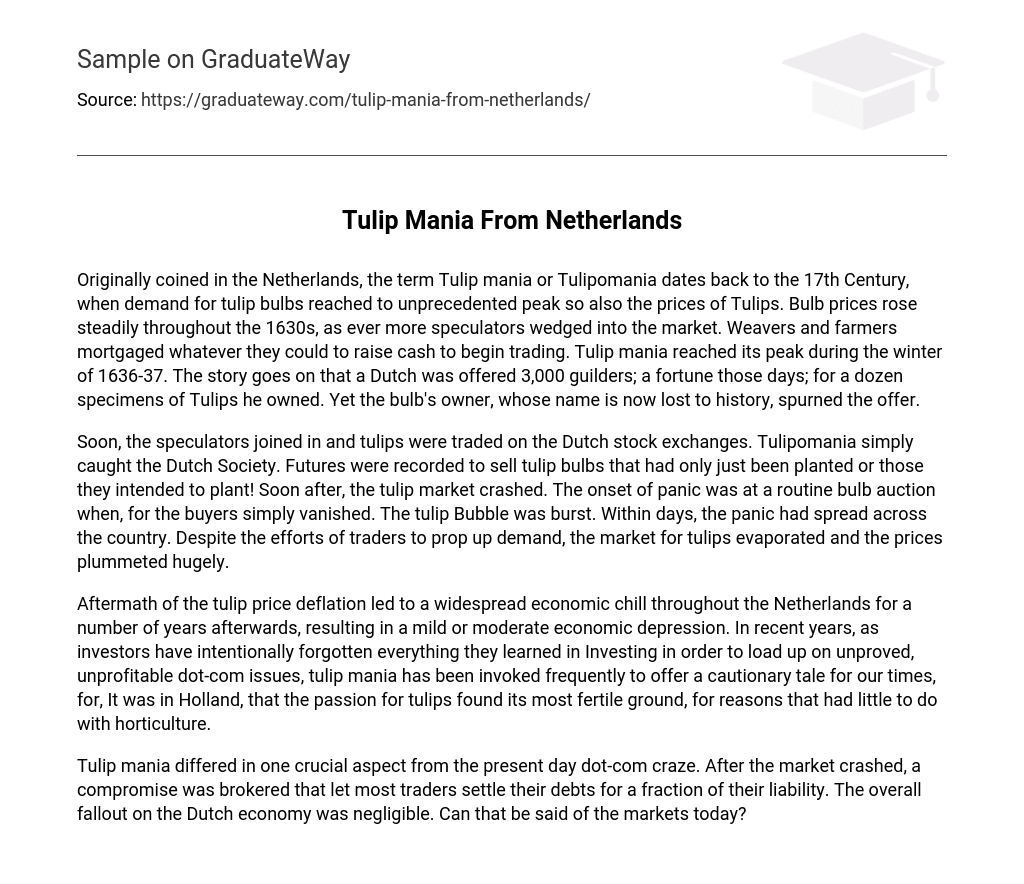Originally coined in the Netherlands, the term Tulip mania or Tulipomania dates back to the 17th Century, when demand for tulip bulbs reached to unprecedented peak so also the prices of Tulips. Bulb prices rose steadily throughout the 1630s, as ever more speculators wedged into the market. Weavers and farmers mortgaged whatever they could to raise cash to begin trading. Tulip mania reached its peak during the winter of 1636-37. The story goes on that a Dutch was offered 3,000 guilders; a fortune those days; for a dozen specimens of Tulips he owned. Yet the bulb’s owner, whose name is now lost to history, spurned the offer.
Soon, the speculators joined in and tulips were traded on the Dutch stock exchanges. Tulipomania simply caught the Dutch Society. Futures were recorded to sell tulip bulbs that had only just been planted or those they intended to plant! Soon after, the tulip market crashed. The onset of panic was at a routine bulb auction when, for the buyers simply vanished. The tulip Bubble was burst. Within days, the panic had spread across the country. Despite the efforts of traders to prop up demand, the market for tulips evaporated and the prices plummeted hugely.
Aftermath of the tulip price deflation led to a widespread economic chill throughout the Netherlands for a number of years afterwards, resulting in a mild or moderate economic depression. In recent years, as investors have intentionally forgotten everything they learned in Investing in order to load up on unproved, unprofitable dot-com issues, tulip mania has been invoked frequently to offer a cautionary tale for our times, for, It was in Holland, that the passion for tulips found its most fertile ground, for reasons that had little to do with horticulture.
Tulip mania differed in one crucial aspect from the present day dot-com craze. After the market crashed, a compromise was brokered that let most traders settle their debts for a fraction of their liability. The overall fallout on the Dutch economy was negligible. Can that be said of the markets today?





